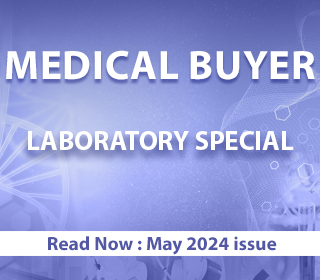Buyers Speak
Automation in lab medicine

The importance of laboratory medicine has increased many folds over the last few years. Proper diagnosis remains the key to improvised delivery of healthcare facility to the community.
The clinicians depend on the laboratory for diagnosis, and subsequent decision of line of treatment for their patients. So, the best-possible measure needs to be taken by the hospital/laboratory administration to ensure that the laboratory can provide high-quality reports to their clinicians with proper TAT.
In the last few years, lab medicine has shifted from semi-automation to fully automated system as follows:
- 3-part hematology analyzer has given way to 5-part analyzer in a majority of corporate laboratories and hospitals. In the next few years, it will be changed to 6 or 7-part analyzer.
- Fully automated biochemistry analyzer with higher throughput has not only resulted in better precision and accuracy, but it has also improved the overall TAT with quick report delivery, which remains vital for ICU patients.
- Elisa is being replaced by fully automated CLIA machines from top brands, resulting in less technician dependence and better and quicker report delivery.
- Barcoding system in sample collection has reduced pre-analytic errors to almost 0 percent.
- Laboratory information system, which has resulted in full automated transfer of reports from machines to the reporting software, has resulted in no chance for human error.
With the emerging molecular diagnostic techniques, lab medicine will be able to deliver more to the clinicians. PCR and flow cytometric techniques will play a pivotal role in years to come. They will ensure more diagnostic accuracy.
All this technological upliftment needs a lot of budgetary allocation. The high-end machines are costly. So, in order to improve the overall healthcare service for the patient, hospitals and diagnostic laboratories need to install high-end equipment in their own setups. Outsourcing samples will affect the TAT, which will definitely have negative impact on the patient prognosis.
Hospitals and diagnostics, which can perform in-house processing of majority of samples, will always have edge over others. Both the clinicians and the patients want quality report as quickly as possible. We have noticed the impatience of people whenever there has been a delay in reporting of outsourced samples.
Outsourcing patient samples not only affects the TAT, it also has quality issues. Strict temperature maintenance of such samples is seldom achieved, which severely affects the report quality.
Also, many a time, due to logistic failure, some samples are misplaced. The only way to overcome such issues is to process samples in own laboratory. The hospital/laboratory management should allocate more funds to overcome this issue and acquire the above-mentioned equipment in their own centers. This investment in the long run will benefit them in many ways. It will ensure the following:
- Better quality of reports
- Improvement in TAT
- Less chance of logistic error
- Less chance of repetition of samples
So, to sum up, I would recommend more investment in laboratory setup for the overall upliftment of healthcare facility. Hospital and diagnostics will be able to earn much more revenue as compared to the investment in years to come.














